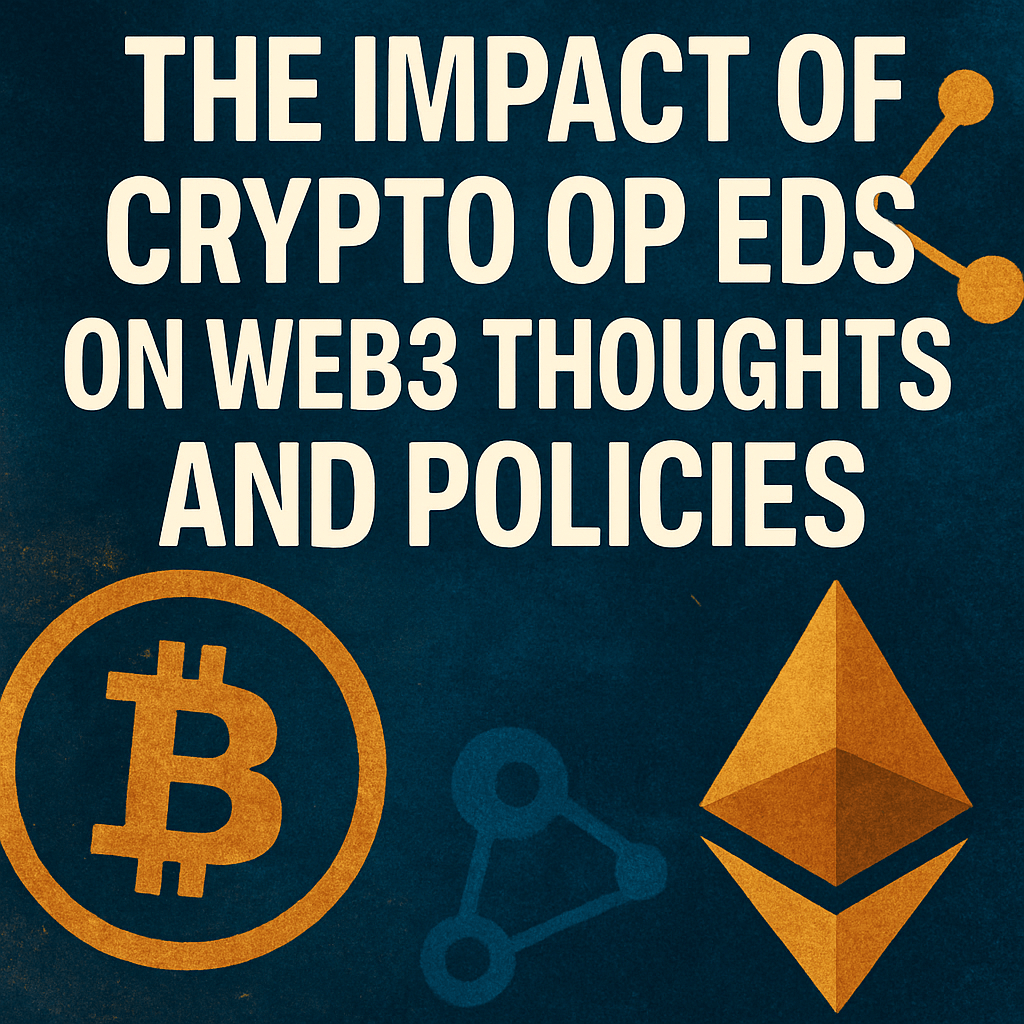The Impact of Crypto Op-Eds on Web3 Thoughts and Policies


In the latest episode of Decentralize with Cointelegraph, experts engage in a comprehensive analysis of how opinion pieces in the cryptocurrency realm are playing a pivotal role in shaping public perception, influencing policy making, and crafting the narrative surrounding Web3 technologies. The power of these op-eds cannot be understated; they serve as a barometer for public attitudes and can significantly affect regulatory frameworks and the wider ecosystem.
Understanding the Informational Landscape
Cryptocurrency, often characterized by its decentralized ethos, faces challenges when it comes to regulation and mainstream acceptance. Op-eds are critical in this landscape as they can convey complex technical information in an accessible manner, enabling a broader audience to engage with the subject. A well-researched opinion piece can elucidate intricate facets of blockchain technology, such as its consensus models or scalability solutions, making them vital educational tools.
The Ripple Effect of Op-Eds
In the wake of 2022, where regulatory scrutiny intensified following high-profile collapses within the crypto space, experts cite the ramifications of these opinion pieces. Not only do they provide personal insights, but they often tap into investor sentiment and can influence decision-making by regulators. For instance, op-eds that articulate the risks of centralized exchanges versus the benefits of decentralized finance (DeFi) instruments can prompt changes in investor behavior, leading to greater participation in self-custodied assets.
Influencing Regulatory Frameworks
Regulatory bodies worldwide are increasingly looking towards public sentiment to inform their decision-making processes regarding cryptocurrency regulation. In Europe, for example, the Markets in Crypto-Assets Regulation (MiCA) proposal has been heavily influenced by public discourse, including op-eds that address issues ranging from consumer protection to technological innovation. These articles often reach audiences far beyond the immediate crypto community, affecting lawmakers’ views and policy decisions.
The Intersection of Technology and Narrative
As technological developments in Web3 proliferate, the narratives constructed by op-eds will likely evolve. Discussions surrounding privacy, decentralization, and the ethical implications of artificial intelligence and blockchain are becoming more prevalent. For instance, as AI systems integrate with blockchain to enhance fairness and transparency, op-eds can shape opinions on these advancements, potentially influencing future regulations regarding AI and data protection laws.
Emerging Trends in Crypto Communication
- Increased Focus on Sustainability: As the environmental impact of blockchain technologies gains traction, op-eds advocating for sustainable practices, such as proof-of-stake consensus mechanisms, are becoming more prevalent.
- Establishing Industry Standards: Opinions articulated in these pieces can help lay the groundwork for industry best practices, aiding in the establishment of standards that could garner broader acceptance.
- Cross-Disciplinary Engagement: Credible voices from fields such as economics, law, and social sciences are increasingly contributing to the crypto discourse through op-eds, enriching the conversation.
Conclusion: The Future of Web3 Narratives
As the landscape of cryptocurrency and blockchain technology continues to evolve, the importance of op-eds will likely increase. They not only shape public perception but also help guide policymakers in uncertainty. The discourse surrounding Web3 will continue to be influenced by these contributions, making it essential for industry stakeholders to remain engaged and proactive in communication.
“The evolution of public sentiment towards crypto heavily depends on the quality and depth of the narratives created through opinion pieces.” – Anonymous Expert
In summary, as the intersection of crypto and public opinion deepens, op-eds will be crucial in navigating the ongoing transformation of Web3.